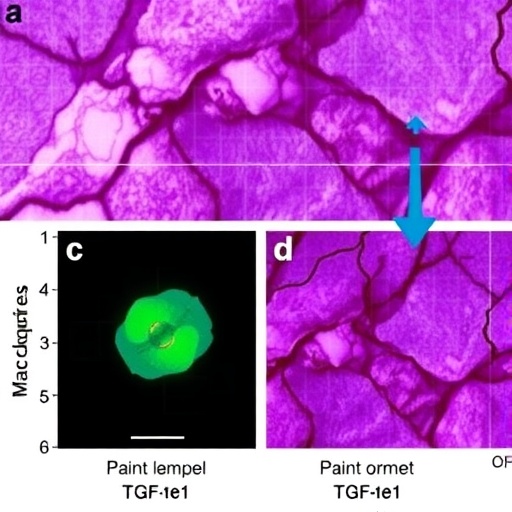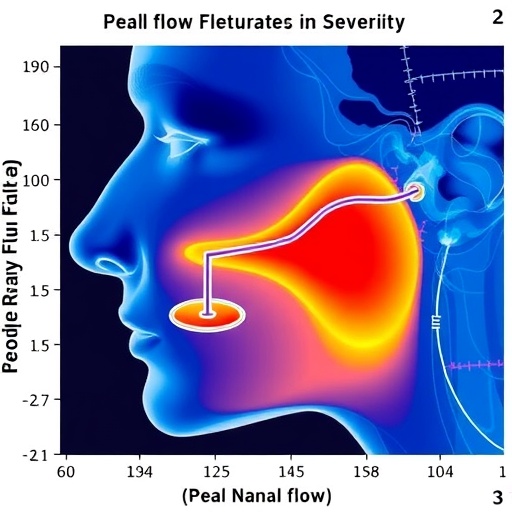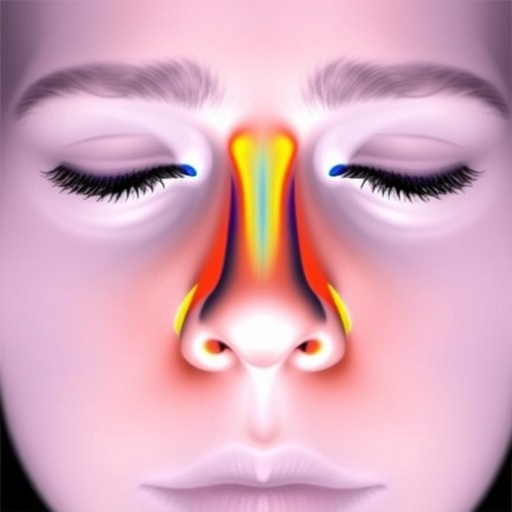In a groundbreaking study published in the Journal of Translational Medicine, researchers have unveiled a significant discovery regarding the regulation of macrophages in the dorsal root ganglion (DRG) through the action of TGF-β1 (Transforming Growth Factor Beta 1). This research sheds light on the intricate mechanisms underlying traumatic neuroma formation, a condition characterized by an abnormal growth of nerve tissue following injury. The findings may pave the way for novel therapeutic approaches aimed at alleviating pain associated with this debilitating condition.
Traumatic neuromas often arise in patients who have experienced nerve injuries, resulting in a persistent and intense pain sensation. Traditionally, managing such pain has posed significant challenges, and the presence of dysfunctional macrophages within the DRG has been implicated in the pain signaling pathways. Understanding how TGF-β1 influences macrophage behavior could unlock new avenues for pain management strategies.
Macrophages are versatile immune cells that assume various roles depending on the tissue microenvironment and injury context. In the case of nerve injuries, macrophages not only clear debris but also release pro-inflammatory cytokines that can perpetuate pain signaling. The current study focuses on discerning the role of TGF-β1 in modulating macrophage function within the DRG, which could be a pivotal factor in the development of effective pain treatments.
The researchers conducted in vitro experiments utilizing cultured DRG neurons alongside macrophages treated with TGF-β1. By employing advanced imaging techniques and genetic analysis, they were able to observe the phenotypic changes in macrophages upon exposure to TGF-β1. Surprisingly, TGF-β1 instigated a shift in macrophage behavior, orchestrating a transition from a pro-inflammatory state to an anti-inflammatory phenotype. This transformation suggests that TGF-β1 plays a critical role in mitigating the inflammatory response, ultimately leading to a reduction in pain signaling.
The pivotal role of TGF-β1 in regulating macrophage activity raises critical questions regarding its therapeutic potential. By harnessing the properties of this cytokine, researchers envision the possibility of developing targeted treatments that could alleviate the agonizing pain associated with traumatic neuromas. The implications of such therapies could significantly enhance patient quality of life, especially for those who have endured chronic pain following nerve injuries.
In understanding these biological processes, researchers also addressed the potential cellular signaling pathways involved in TGF-β1-mediated macrophage regulation. The investigation revealed that specific signaling molecules activate pathways integral to macrophage polarization, leading to changes in cytokine production. By elucidating these mechanisms, the study offers insight into how TGF-β1 can be strategically employed to influence macrophage function and, in turn, pain outcomes.
One of the notable aspects of the study lies in its translational potential. The co-authors emphasize the need for further research to explore the feasibility of utilizing TGF-β1 in clinical settings. The bench-to-bedside transition, while promising, will necessitate rigorous testing through preclinical and clinical trials to establish the efficacy and safety of TGF-β1-based therapies.
Moreover, the researchers recognize the importance of collaboration in advancing this line of inquiry. Engaging interdisciplinary teams comprising neurobiologists, pharmacologists, and clinical practitioners is crucial to push these findings forward into applicable treatments. The integration of expertise across various fields could expedite the development of novel therapeutic modalities.
As the research progresses, the implications extend beyond mere pain management. Understanding macrophage behavior in the context of nerve injuries could also provide valuable insights into the broader field of neuro regenerative medicine. Exploring how macrophages contribute to nerve repair mechanisms may lead to innovative strategies for enhancing recovery following nerve injuries beyond pain alleviation.
In addition to its scientific contributions, this study opens new avenues for public discourse regarding pain management strategies. With millions of individuals afflicted by chronic pain, advocacy for further research funding and policy support is paramount. This study serves as a clarion call to governmental and health organizations to prioritize research in pain biology and explore the potential benefits of leveraging existing biological pathways for therapeutic gains.
Overall, this research underscored the complex interplay between immune responses and nerve injury outcomes, with TGF-β1 emerging as a potential game-changer in the narrative of painful traumatic neuromas. As the scientific community continues to unravel the nuances of inflammation and pain, studies like this not only fuel hope for those suffering from debilitating conditions but also push the boundaries of what is known in pain biology.
In conclusion, the revelations from this study underscore the intricate relationship between the immune system and pain perception. TGF-β1’s ability to modulate macrophage behavior presents a promising therapeutic strategy for addressing the challenges posed by traumatic neuromas. The journey from bench to bedside is fraught with challenges, yet the potential benefits for chronic pain sufferers make it a worthy pursuit for researchers and clinicians alike.
As the findings are disseminated within the scientific community and culminating discussions arise around their implications, a clearer understanding of the future landscape of pain management tactics is on the horizon. Identifying actionable strategies to inhibit painful processes through modulating macrophage behavior could usher in a new era for individuals grappling with their pain-related challenges.
In summary, what began as an investigation into macrophage activity in the DRG has opened up a plethora of opportunities for innovation in pain management. With TGF-β1 taking center stage, we may soon witness the advent of therapies that not only revolutionize treatment outcomes but also empower individuals to reclaim their lives from the grips of chronic pain. The collective hope is that future research will illuminate the pathways anticipated to guide patients away from suffering and towards a brighter and more pain-free tomorrow.
Subject of Research: Regulation of macrophages in the dorsal root ganglion through TGF-β1
Article Title: Regulation of macrophages in the dorsal root ganglion through TGF-β1 inhibits painful traumatic neuroma.
Article References:
Xia, C., Liang, J., Wang, K. et al. Regulation of macrophages in the dorsal root ganglion through TGF-β1 inhibits painful traumatic neuroma.
J Transl Med 23, 1157 (2025). https://doi.org/10.1186/s12967-025-07143-5
Image Credits: AI Generated
DOI: 10.1186/s12967-025-07143-5
Keywords: TGF-β1, macrophages, dorsal root ganglion, traumatic neuroma, pain management, inflammation, therapeutic strategies.
Tags: cytokine influence on macrophagesdorsal root ganglion immune responseimmune modulation in nerve injury recoverymacrophage behavior in injury contextsnovel therapeutic approaches for neuropathic painpain management strategies for nerve injuriespersistent pain in traumatic neuromasrole of macrophages in pain signalingTGF-β1 and macrophage regulationTGF-β1 effects on nerve tissuetranslational medicine in pain researchtraumatic neuroma formation mechanisms





